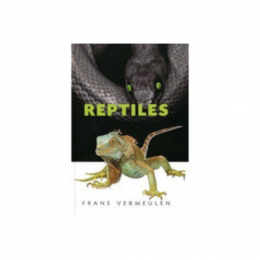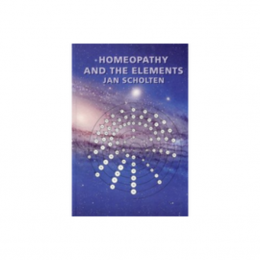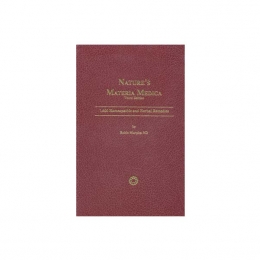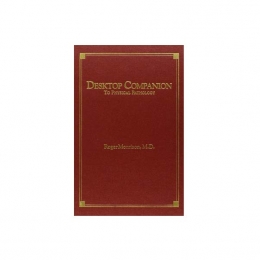Birds - Joshi
Cases that elaborate the system Homeopathic Classification of nearly 9000 birds Understanding of over 250 bird families More than 500 bird species explained All birds families with their unique numbers and key words Birds with their unique columns nos. to differentiate better Key words for easy differentiation Quick reference charts List of current bird remedies available around the world
Homoeopathy and the Elements - Jan Scholten, 2007
The subject of this book is homeopathy and the elements of the periodic system. The remedy pictures of almost all the elements of the periodic system are described.
The periodic system is a table of all existing elements, the atoms, from Hydrogen to Radon, and of the radioactive elements, such as Uranium and Plutonium. The table has rows and columns in which the elements are grouped. A theory is developed about the use of the periodic system in Homeopathy. This theory shows that every row and every column has a specific theme. The seven rows are called series. The first series, the Hydrogen series, has the theme of coming into being. The second series, the Carbon series, has the theme of the development of the ego. The third series, the Silicum series , shows the theme of relationships. The fourth series, the Iron series, covers the theme of work. The fifth series, the Silver series, has the theme of creativity. The sixth series, the Gold series, shows the theme of the king, the leader.
Each series shows a development: the theme of the series is developed in eighteen stages. These stages, the columns, describe a development: starting a theme, rising, coming to a top, then declining again and in the end comes the loss.
In this theory every element can be described by the concepts of the series and the stage the element is in. A total picture is given of the periodic system as a spiral. Every wind of the spiral is a series or row. And every radiant is a stage or column. The spiral pictures the expanding consciousness: from the consciousness of the Ego in the beginning to that of a neighbourhood, a village, a city, a country and in the end the whole universe.
‘When you have seen that a patient who doubts for years what to do with his life, takes clear decisions suddenly after a dose of Scandium, and also executes them (and has got rid of all kind of fears at the same time), you want to have this book at your desk next to the Repertory.’ - Frans Kusse, SSC, Vol 26, Nr2, 1996.
Excerpt from Foreword: Finding the right remedy is the greatest challenge of homeopathic medicine. It seems that I am stating the obvious. But this isn’t altogether true. The greatest challenge is to admit that you haven’t yet found the remedy you are looking for. One of the greatest eye openers ever was the reverse similars law presented to me by Jan Scholten one day: an unknown picture needs an unknown remedy. A brilliant hint and food for thought for all of us who are involved in homeopathy, for the anxious seeker who is looking for that one remedy that will cure his problem patients, as well as for the complacent ruminator who thinks he has seen it all by now.
A pint of discussion that we frequently encounter is whether homeopathy is an art or a science. This discussion all depends on the theoretical question whether heuristics belong to the domain of science, or whether it should be seen as so called ‘pre scientific procedures’. Heuristics is the methodology of searching. In order to find something new you have to try to find out where to look for it and this is in turn related to your problem-solving urges. In other words, if you accept that the way things are is just fine, then you will never feel the need to look at other horizons. But when you recognize the problem of the status quo, you will go and search for missing links and boundaries that can be shifted.
This book is all about the periodic system. The best introduction to the new ideas presented in this book is to suggest the following exercise. Take a large sheet of paper and draw a grid of 18 vertical columns and 7 horizontal lines and then proceed to fill in the elements in the usual way, starting with Hydrogen, Helium, Lithium, etc.
Next take the most extensive Materia Medica you can find and make a note of the most important rubrics of each element in its appropriate compartment. When you have done that stand back and take a look. You will notice that most of the spaces are empty. Now ask yourself this question: “Why are there so many empty spaces, while others are filled up with polychrests like Ferrum metallicum, Phosphorus, Sulphur, or Aurum metallicum? Are you beginning to get a sense of the problem? You have just asked yourself a very heuristic question. The only step that lies between a question and an answer is ACTION! That is precisely what Jan Scholten did and the result is this book: a Materia Medica of the periodic system. The book that is in front of you right now will enable you to start filling in those empty compartments.
880 pages, hard cover
Nature’s Materia Medica (4th Edition) - 1500 Homeopathic and Herbal Remedies - Robin Murphy, 2015
Excerpt from Preface: Nature’s Materia Medica is the third edition of the Homeopathic Remedy Guide which was first published in August of 1995. The third edition of the Nature’s Materia Medica was designed to be a complete rewrite and major upgrade of the Homeopathic Remedy Guide, second edition. My attempt has always been to create a new and easy-to-use materia medica for homeopaths to use in daily practice, while still remaining accessible for use at home and in the classroom.
The changes made to this 3rd edition comprise my attempts to build on that philosophy. Nature’s Materia Medica contains hundreds of new remedies and thousands of new updates and additions.
The Nature’s Materia Medica, third edition was updated to be a more clinical, practical and easy-to-use reference guide to the vast homeopathic materia medica. After editing the second edition, I continued to add more modern terminology, cross references and corrected any errors that were found. The final step was to systematically survey the homeopathic and herbal literature for reliable additions and updates. The highest priority was to find more clinical information relevant to modern homeopathic, naturopathic and herbal practice.
The writings of Allen, Anshutz, Boericke, Burnett, Clarke, Cooper, Hale, Hahnemann, Hering, Julian, Paracelsus, Phatak and Radamacher formed the some of the major resources from which the remedy monographs were compiled, formatted and updated. Each remedy is reviewed as to its pharmacy, folklore, historical uses, keynotes, generals, provings, case histories and toxicological reports.
2214 pages, hard cover
Desktop Companion to Physical Pathology - Roger Morrison, 1998
Excerpt from Introduction: As with my first book, Desktop Guide to Keynotes and Confirmatory Symptoms, I have embarked upon the writing of this text because I wanted it for my own practice. I have tried to create a concise yet thorough differential for each of the main pathologies encountered in homeopathic practice. It is my hope that the present book will serve as a companion to my earlier book.
My main concern throughout the writing of this books has been that its purpose and the information it contains would be misconstrued and misused. Homeopathy is an art and a science which must always aim to cure the patient on the deepest level. In this aim, often it is the deepest inner conflicts and frustrations of our patient which lead us to the correct remedy. The practitioner must always consider the whole person. In fact, many cases the constitutional remedy cures a pathology for which it is not listed in our materia medica. Since this is so, what is the purpose of writing a therapeutic text which by its name emphasizes the physical symptoms and keynotes?
I wish therefore, to be clear about my intentions in putting forth this material. The purpose of this book is threefold: It is meant first as an aid to be used at the time of patient interview (either by phone or in person) to cue the practitioner toward likely remedies for a particular condition. The second purpose is as a study guide, bringing the main points of the remedies into focus. And, finally, to give advice about treatment based on the experience of myself and my colleagues at our center.
605 pages, hard cover
Prisma Reference by Frans Vermeulen
Homeopaths are always eager to have the latest repertory with the most additions to keep the greatest amount of info at their fingertips. The same should be true with materia medica – they should contain information that is both accurate and current. For over 20 years, Vermeulen materia medicas have provided reliability, breadth and depth, cutting edge details supporting the changes in methods of prescribing. That is why they are the best selling and most trusted materia medicae in homeopathic practice. The Ultimate Prisma Collection contains the most remedies and the most detailed information of any materia medica, including hundreds of remedies not found in any other text. This work also features the most comprehensive list of remedies, all accurately identified, categorised and described, considerably improved, revised and expanded from Vermeulen’s previous works. To reflect new prescribing practices 'Sensation' entries have been added. These are the tools of our profession – a carpenter would not keep a dull saw, a seamstress would not keep an outdated sewing machine, a cook would not use stale ingredients. To achieve the best results homeopaths must constantly update their reference materials and ensure that they are working with information of the highest quality. A small change in the placement of a plant into a different family, new source details about a mineral or the addition of a new animal remedy can make a huge clinical difference.
Wonderful Plants - Scholten
After many years of intensive research, Jan Scholten’s long-awaited book on the taxonomy of plants, Wonderful Plants, is now available in English. Jan Scholten’s previous works on the systematic classification of the elements of the periodic table as homeopathic remedies was the greatest breakthrough of the last ten years in homeopathy. His discoveries have been confirmed in thousands of successful cases. Yet, the main thrust of Jan Scholten’s research is not the Mineral but the Plant kingdom. This can easily be seen in the thoroughness and precision of the information offered in his monumental new work.
The same natural laws that can be seen in the series and stages of the periodic table also underlie the taxonomic system of the enormously varied plant families. The path to the required remedy is not as easy to recognize as with the mineral elements – indeed, it is still evolving! One of the timeless values of this work lies in the essences of the plant families.
See also Sense Provings - a companion book to Wonderful Plants - it presents the results of about 200 provings
„To present us the complete pictures of specific plants, families and orders in such a logic and detailed taxonomic system, fitting the problems of our time, is therefore truly a ‘Work’. A more complete and living Materia Medica of the Plant kingdom has never been created before and it could well be The Book of the future of homeopathy.“
Wondrous Order - Michal Yakir
The book "Wondrous Order - The Table of Plants" is currently being translated into English and is expected by the middle of 2015.
Michal Yakir is a homeopathic pioneer who has unlocked the plant kingdom for homeopathy. She has developed her own system for the plant kingdom in the form of a simple tabular set of coordinates with columns and rows, which shows how each column of the plant table can be assigned to different types with varying psychological traits and physical pathologies.
By learning to recognize the special characteristics and themes of the columns, we can acquire a valuable tool to help us identify the required remedy in modern times. Thanks to her straightforward but profound insights based on the ideas of plant evolution, Michal Yakir has made the plant kingdom comprehensible. She adds a new dimension to our existing knowledge of plants, encouraging us to prescribe less well known plants.
Her monumental work contains over 800 different plant remedies, amounting to 95% of the remedies known to homeopathy, including many so far unknown plants. She clearly explains their themes and pathologies in terms of their family and placement in the table. Hundreds of short cases provide graphic sketches of the essences of the individual remedies.
Dr Mahesh Gandhi wrote about Michal Yakir:
"I have had an opportunity to learn from Michal Yakir her novel understanding of plants from development point of view. It makes a lot of sense to me and has changed my outlook towards plants. I am using her ideas in my practise with excellent results. She has made the plant kingdom very understandable by her simple yet deep understanding of them based on the concept of evolution of plants. It is indeed a very fascinating and a practical work.
It gives an additional dimension to our understanding of known plants and also helps us prescribe some yet unknown plants with confidence. It is a very extensive work which can help us prescribe more efficiently in our daily homoeopathic practise. It compliments all that we know about plants from other teachers like Sankaran and Scholten. I would recommend every serious homoeopath to learn it as it will prove to be a useful tool in helping us help our patients."
Structure - Experiences with the Mineral Kingdom, Volume 1 & 2 (2 book set) (Second Edition) - Rajan Sankaran, 2009
Homeopathy has evolved from a symptom-based to a systemic approach where each remedy is seen as a part of a group to which it belongs in nature, rather than as an individual entity. Each patient is guided to explore his innermost experience, or Sensation, where he speaks the language of nature. In order to recognize what language he is speaking, it becomes necessary to know the features of each kingdom and subkingdom in nature. For this purpose it becomes imperative to create a body of work that looks at the Materia Medica from a systematic point of view.
After elaborating on his kingdom idea and the Sensation level, Dr. Rajan Sankaran has been consolidating these with a look into each kingdom. This work is the second of a trilogy on the various kingdoms, the first being ‘An Insight Into Plants’ and the third being ‘Survival’ (on the animal kingdom).
In the case of the Mineral Kingdom, the periodic table readily lends itself to the task of classification. Its seven row and 18 columns can be understood, seen and experienced as stages of human development. Such an understanding leads us to prescribe new remedies with accuracy. Dr. Rajan Sankaran’s recent explorations into the rows, backed by several clinical cases, provings and research, have thrown new light on the Mineral kingdom that makes it significantly easier to recognize the remedies in practice.
1053 pages (combined), hard cover
Synthesis - Repertorium Homeopathicum Syntheticum (Edition 9.1) - ed Frederik Schroyens, 2004
Excerpt from Foreword by Jeremy Sherr: Last year I had the privilege of visiting Dr. Frederik Schroyens in his offices in Ghent, Belgium. It was a hive of activity. A constant stream of information poured in - additions, corrections, provings, translations, revisited classics and new manuscripts. Frederik explained the pyramid structure of the organization, how homeopaths from all over the world gathered information, later passing it on to smaller teams who checked and rechecked it until it arrived at the Ghent office where the final sifting, confirming, corroborating, editing, and publishing were performed. I was very impressed. From my own experience of repertorizing, I have learnt to appreciate the enormous time and work that goes into each rubric, remedy, cross reference and annotation. It is the work of ants and a labor of love.
But i was not only the industriousness that impressed me. It was the dedication to detail and accuracy that filled me with a renewed confidence in the repertory. The repertory is our daily tool; it is our right arm, the gateway to materia medica and to healing. On this tool the health of our patients depends, and we must be able to rely on it in the way a carpenter relies on his plane, a soldier on his sword, a baker on his oven, a writer on her pen. It must be sharp and accurate, all-encompassing but not over-inflated. I found the Synthesis to be all these things, and the tool felt right in my hand.
2214 pages, hard cover










